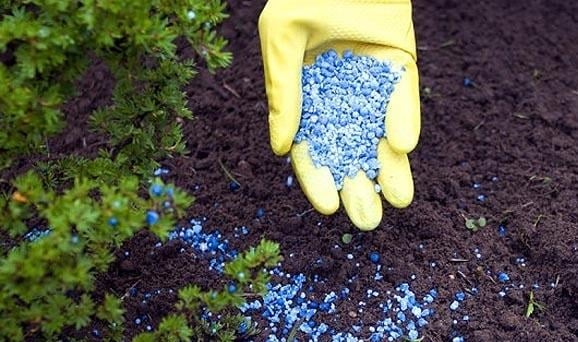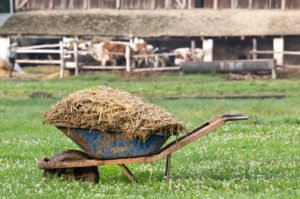
Country ranch. An ideal place for productive work and relaxation, where the soul rejoices and the body rests. Where we take good care of the green plants, and they delight us with a good harvest and beauty. In order for our beautiful garden to bloom and give a plentiful harvest, their inhabitants need nutrients-fertilizers. How to feed plants, what fertilizers they need, when and why-we will consider in this article. All soil fertilizers are divided into three main types: organic, mineral and bacterial.
Organic fertilizer

When feeding our plants, the prerogative is given to organic fertilizers of plant or animal origin, which do not include any “chemistry”.
- Manure – animal waste. For watering plants, manure is usually diluted with water (1×10), for filling the pit, it is mixed with the soil, and when digging, it is added to the soil.
- Bird droppings for top dressing of plants, granulated dry bird droppings are usually used, diluting it with water in the ratio of 100 g per 15 liters of water.
- Compost — a combination of different types of organic fertilizers. For example, bird manure is usually combined with peat, slurry, and wood ash.
- Guano (decomposed litter of seabirds) is a very valuable natural fertilizer, this concept is also applicable to the so – called tuk-fertilizer from industrial waste of fish and animals.
- Peat, which is formed during the incomplete decomposition of plants, is also called “flammable earth”, since in the process of biochemical decomposition, the temperature can reach 50-60 degrees Celsius (122-140°F).

Mineral fertilizer

Mineral fertilizers are produced by chemical methods and are divided into simple and complex. The group includes simple fertilizers: nitrogen, phosphorus and potash fertilizers.
Nitrogen fertilizer
Nitrogen fertilizers (urea, ammonium sulfate and ammonium nitrate) are usually applied to the soil in the summer. They are easily absorbed by the root system of plants and are used on slightly acidic soils. Dilute nitrogen fertilizer should be strictly according to the instructions (as indicated on the package) to avoid unpleasant incidents. We are all familiar with the concept of “plant burn”, and therefore, with the wrong dosage, it can seriously harm your green plants. And with the correct use of nitrogen fertilizers, the yield of agricultural crops, especially vegetables, increases significantly.
Phosphate fertilizer
The fact is that, as such, phosphorus, which is necessary for the proper growth of young plants, is not present in the soil in a free form. Therefore, phosphorus fertilizers (superphosphate and phosphate rock) are used on absolutely any soil. Moreover, they do not need to be mixed with water, they are introduced deep into the soil (in the root growth zone) when it is dug out at the rate of 200 g per 1 sq. m.
Potash fertilizer
Potash fertilizers (potassium sulfate, potassium chloride, and potassium salt) are usually used on sandy soils. They improve the soil in those layers where the main mass of auxiliary roots develops, since young roots can absorb potassium and carry it throughout the plant. Potassium promotes the development of aboveground parts of plants (trunks and branches) and strengthens the immune system of our green friends, helping them to get rid of serious diseases. Potash fertilizers are usually applied to the soil in the fall, spring and summer should be used very sparingly, and during seed germination and seedling planting, it is not recommended to apply them to the soil.
Complex fertilizer

Complex fertilizers are various mixtures of nitrogen, phosphorus and potash fertilizers with additives of various trace elements and organic matter, as well as without them.
The compound ratios of elements in complex mineral fertilizers are selected for each group of plants individually. For example, fertilizers with a predominance of potassium and magnesium are used for flowers; fertilizers for fruit and vegetable crops are dominated by nitrogen, fertilizers for trees are given the prerogative of potassium sulfate, and organomineral fertilizers based on humus, rich in phosphorus and potassium salt, are used for delicate tropical plants. You do not need to combine a complex composition of complex fertilizers for the garden, it is easier to buy ready-made compositions for specific plant species in the store.
Bacterial fertilizer
Bacterial fertilizers (nitragin, phosphobacterin, rhizotorphin, extrasol, azotobacterin) are biostimulants containing live cultures of microorganisms. Bacterial fertilizers are used to efficiently process seeds immediately before planting. Also, biostimulants can be mixed with the soil during spring digging, in the proportions indicated on the package. According to statistics, the use of biostimulants increases the yield of plants by 6-10%.

As you can see, there are many different fertilizers for the garden, for trees and lawns, flowers, vegetables and fruit crops. But, using this wealth of both natural (organic) and mineral biochemical vitamins, do not forget a simple rule: it is better to add less fertilizers than to add too much of them. An excess of fertilizers can destroy the plant, even if it does not die completely, it can greatly slow down its development, and you will not get good fruits from it.




Leave a Reply